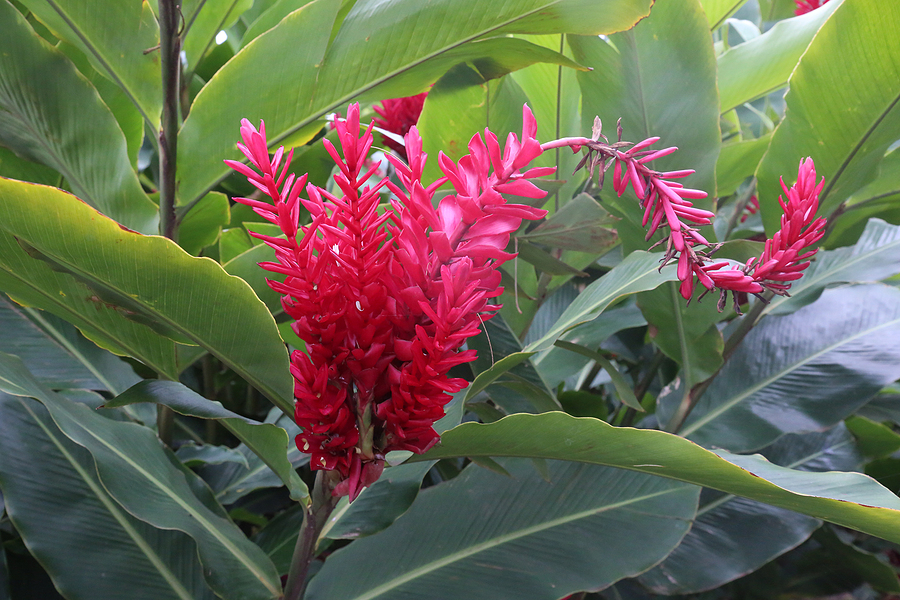Hawaii's Most Famous Flower
Hawaii's Most Famous Flower
The official flower of the Big Island is the lehua blossom
The official flower of Hawaii Island, or the Big Island, is the lehua blossom (Metrosideros polymorpha), a vibrant flower that grows on the 'ōhi'a tree, a species native to Hawaii and deeply tied to the island's volcanic landscapes and cultural heritage. The lehua, which ranges in color from fiery red to orange, yellow, or even rare white, symbolizes the island's dynamic and powerful natural forces, often blooming on lava flows and showcasing the resilience of life.
This striking flower is steeped in Hawaiian mythology, associated with the goddess Pele and the legend of the lovers 'Ōhi'a and Lehua, where the lehua blossom represents eternal love. Found throughout Hawaii Island, particularly in areas like Hawai'i Volcanoes National Park, the lehua is admired by visitors and locals alike for its beauty and ecological importance, supporting native birds like the 'apapane and 'amakihi.
Despite its resilience, the 'ōhi'a tree and its iconic lehua flower face threats from Rapid 'Ōhi'a Death (ROD), a fungal disease that has devastated significant portions of 'ōhi'a forests, prompting conservation efforts to protect this vital species. As the Big Island's official flower, the lehua blossom stands as a vivid symbol of the island's fiery origins, enduring spirit, and natural splendor, embodying the heart of Hawaii's largest and most diverse island.
Ginger flower

Lehua Blossom
The ginger flower, celebrated for its vibrant colors and captivating fragrance, is a striking bloom that thrives in Hawaii's tropical climate and lush landscapes. Native to Southeast Asia and introduced to Hawaii in the 19th century, ginger flowers, including varieties like red ginger (Alpinia purpurata), white ginger (Hedychium coronarium), and yellow ginger (Hedychium flavescens), have become an integral part of the islands'botanical identity. These flowers flourish in the warm, humid conditions of Hawaii's rainforests, particularly on the windward sides of the islands, where rainfall is abundant. Known for their dramatic appearance, ginger flowers are commonly used in leis, floral arrangements, and landscaping, with an estimated 5 million ginger blooms harvested annually across the islands. White ginger, known in Hawaiian as 'awapuhi ke'o ke'o, is especially prized for its intoxicating scent and is often used to create fragrant leis for special occasions. Ginger flowers also play a role in Hawaiian culture and traditional medicine, with parts of the plant used in healing practices. In addition to their aesthetic and cultural value, ginger plants contribute to Hawaii's thriving horticulture industry, drawing countless visitors to botanical gardens and markets to admire or purchase these stunning blooms. The ginger flower's bold beauty and versatility make it a cherished symbol of Hawaii's natural splendor, offering a sensory delight that captures the essence of the islands.
soap flower
The soap flower, often associated with the 'awapuhi kuahiwi or shampoo ginger (Zingiber zerumbet), is a fascinating and multifunctional plant native to Southeast Asia but widely naturalized in Hawaii, where it thrives in the islands' humid, tropical forests. This unique plant is distinguished by its bright, pinecone-shaped bracts that turn red as they mature and exude a clear, fragrant liquid used as a natural soap or shampoo, giving it its common name. Introduced to Hawaii by Polynesians, the soap flower holds cultural significance as a versatile plant used in traditional Hawaiian practices for both hygiene and medicine, particularly to soothe skin irritations and conditions. Growing up to 4 feet tall, the 'awapuhi kuahiwi is often found in the wet, lush valleys of islands like Kauai and Maui, contributing to the biodiversity of Hawaii's rainforests. Its striking appearance has also made it popular in landscaping and tropical flower arrangements, adding a touch of exotic beauty to gardens and displays. With its rich history and practical uses, the soap flower remains an enduring symbol of Hawaii's resourceful relationship with its natural environment, blending functionality with beauty in a way that captures the spirit of the islands.